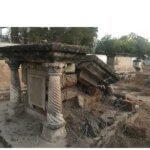
Bhuj
(Photo: K Marsh, 2019)
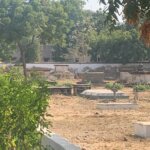
(Photo: Prof Jigna Desai, 2023)
BACSA recently agreed to commission the Centre for Heritage Conservation at CEPT (‘Centre for Environmental Planning and Technology’) University, Ahmedabad, to investigate and record the graves at St Andrew’s Cemetery in Bhuj, Gujarat State. The Centre is considered to be amongst India’s leading conservation bodies.
The cemetery is about one kilometre north of St Andrew’s Church. Now surrounded by a suburb, it is behind the General Hospital, in Anatomy Gardens.
A few years ago some of our members visited St Andrew’s Cemetery, and were impressed by its age and some fine tombs. BACSA member, Katie Marsh, recorded that it was a ‘secure walled and gated enclosure’ with several tombs which, although ‘mostly rather dilapidated, are substantial’.
Katie noted that many of these ‘substantial’ tombs are ‘quite ornate with decorated capitals, baluster and barley twist columns’.
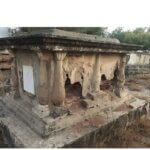
(Photo: K Marsh, 2019)
Katie and her fellow visitors also spotted several inscriptions with dates from the early 1820s.
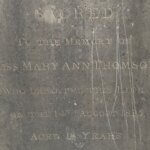
Miss Mary Ann Thomson, 1825
(Photo: K Marsh, 2019)
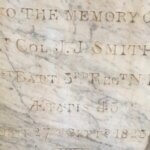
Col J J Smith, 1825
(Photo: K Marsh, 2019)
One fine example is the inscription on the grave of a young woman, Mary Ann Thomson, who died, aged 18, on 14 August 1825.
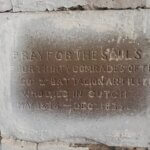
the 2nd Battalion Artillery,
who died in Cutch‘, 1834-35
(Photo: K Marsh, 2019)
Another is the inscription on the tomb of Col J J Smith, 1st Battalion, 3rd Regiment N.I, who died, aged 43, on 27 September 1825. It tells us that Col Smith’s tomb was ‘erected as a mark of respect by the officers of his battalion‘.
A poignant, slightly later Memorial Inscription invites us to ‘pray for the souls of our thirty comrades of the 2nd Battalion Artillery who died in Cutch’ between May 1834 and December 1835.
Katie concluded that the cemetery would benefit from a detailed survey.
It has taken us some time to find a good local partner to carry out this work, and we are very pleased that the Centre for Heritage Conservation is keen to do so.
The project, which started in January this year, is being led by Prof Jigna Desai, head of the Centre, and will involve both academic colleagues and students.
Denise Love and Rachel Magowan
